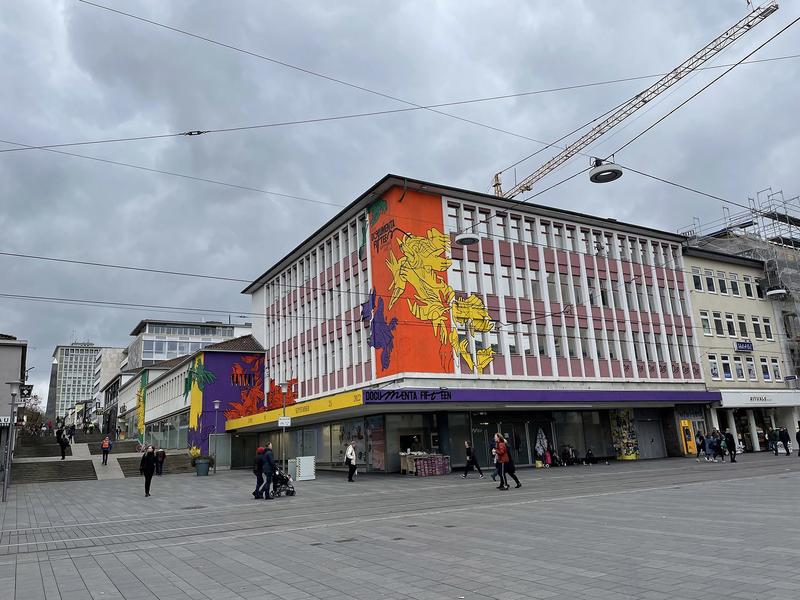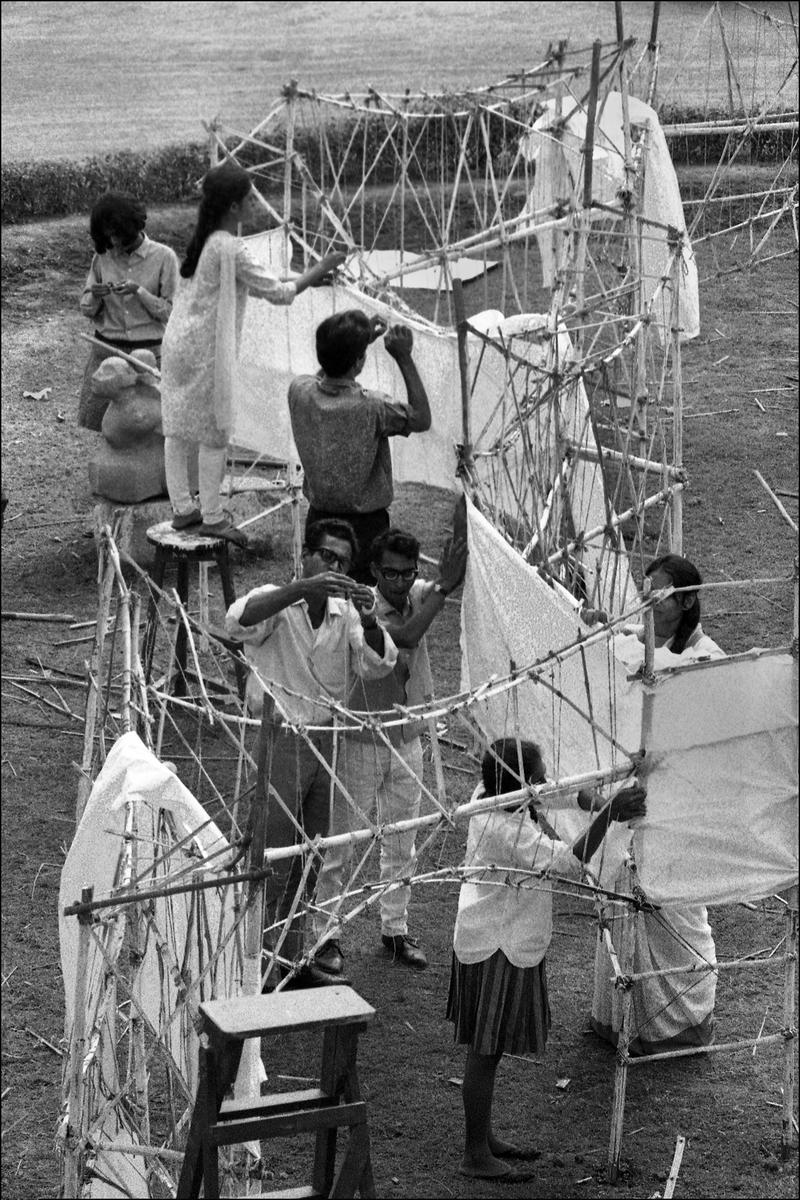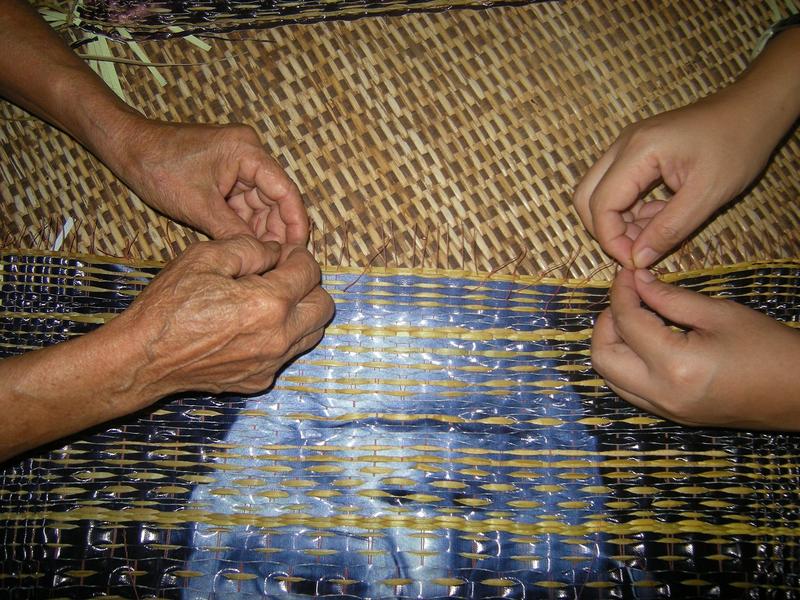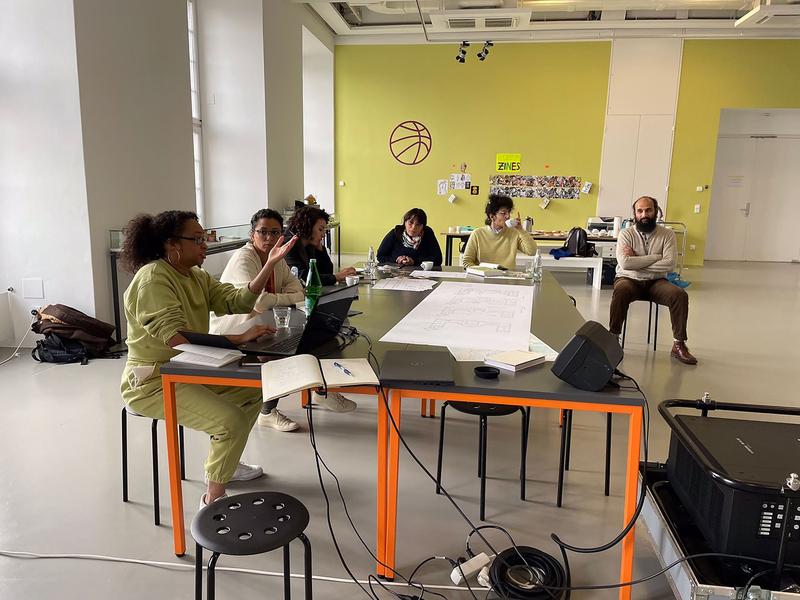 RuruHaus cultural center in Kassel, Germany, serves as ground zero for Documenta 15. (PHOTO PROVIDED TO CHINA DAILY)
RuruHaus cultural center in Kassel, Germany, serves as ground zero for Documenta 15. (PHOTO PROVIDED TO CHINA DAILY)
Documenta 15 — the latest edition of the exhibition of contemporary art held every five years in Kassel, Germany — kicked off on June 18. There is a significant Asian presence at the show this year. For the first time, Jakarta-based arts collective Ruangrupa is curating the event. Also for the first time, Hong Kong’s Asia Art Archive (AAA) has put together a show especially for the exhibition. It is also leading a delegation of local artists who will take part in Documenta’s various forums.
The AAA show is on at the Fridericianum — one of the world’s first public museums, founded in 1779. “We are transforming the Fridericianum into a temporary, experimental school for the duration of the exhibition,” explains AAA’s curatorial team, comprising John Tain, Susanna Chung, Ozge Ersoy and Samira Bose.
 Preparations are made for the 1967 Fine Arts Fair at the Maharaja Sayajirao University of Baroda. The image is part of the Asia Art Archive display at Documenta 15. (PHOTO PROVIDED TO CHINA DAILY)
Preparations are made for the 1967 Fine Arts Fair at the Maharaja Sayajirao University of Baroda. The image is part of the Asia Art Archive display at Documenta 15. (PHOTO PROVIDED TO CHINA DAILY)
“We would like to discuss how an art archive can do advocacy work when it comes to studying, documenting, and highlighting the lesser visible art and cultural histories from our region.”
Titled Translations, Expansions, the presentation reflects on how artists and collectives study, document, interpret and disseminate cultural knowledge, and foregrounds the active roles artists themselves play in preserving and mediating such knowledge.
 Traditional weaving practices on display in On-Anong Glinsiri’s Togetherness and the Way We Were (Preparation). (PHOTO PROVIDED TO CHINA DAILY)
Traditional weaving practices on display in On-Anong Glinsiri’s Togetherness and the Way We Were (Preparation). (PHOTO PROVIDED TO CHINA DAILY)
Presenting 16 artists and collectives, the display features works and archival materials from the 1960s to the present, with a focus on three artistic movements: post-independence India’s Living Traditions, associated with the Faculty of Fine Arts in Maharaja Sayajirao University of Baroda; the feminist biennial Womanifesto, which between the mid-’90s and mid-’00s led participants to learn basketry and weaving from rural craftspeople in Thailand; and a network of performing artists in the ’90s who drew on everyday objects for their creations, documented each other’s work, and performed at festivals in East and Southeast Asia.
The display highlights a 2006 performance art festival in Hong Kong, where artists from the mainland joined their local counterparts. “It shows how Hong Kong was a meeting point to exchange ideas and experiment with art forms across different art communities,” the AAA team points out.
 A meeting at Documenta 15’s Fridskul (the Fridericianum school) in November 2021. (PHOTO PROVIDED TO CHINA DAILY)
A meeting at Documenta 15’s Fridskul (the Fridericianum school) in November 2021. (PHOTO PROVIDED TO CHINA DAILY)
“Our display emphasizes the work of artists who wear different hats: They are not only visual artists but also educators, writers, organizers, and archivists at the same time. This goes back to one of the main questions that Ruangrupa asks: How do we think of artists beyond their individual contributions to the cultural field?”
Documenta 15 is inspired by the idea of lumbung (communal rice barns in rural Indonesia). In other words, it’s all about sharing.
As part of this year’s public program, AAA will collaborate with collectives at talks and workshops covering topics including archive-based storytelling, creative tools for arts education, and how artists share resources.


